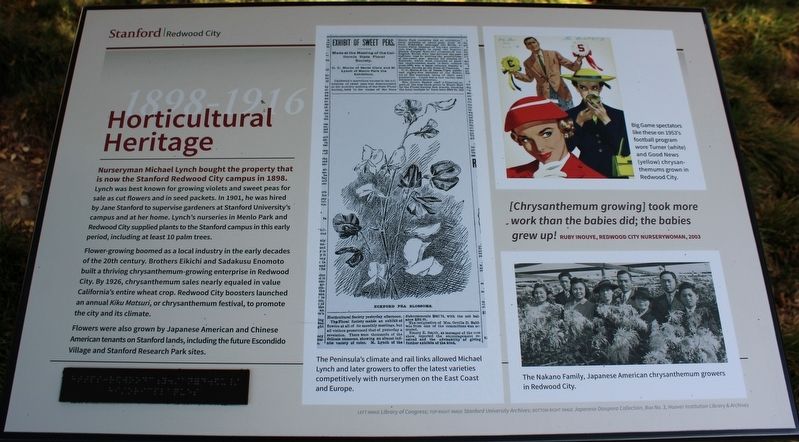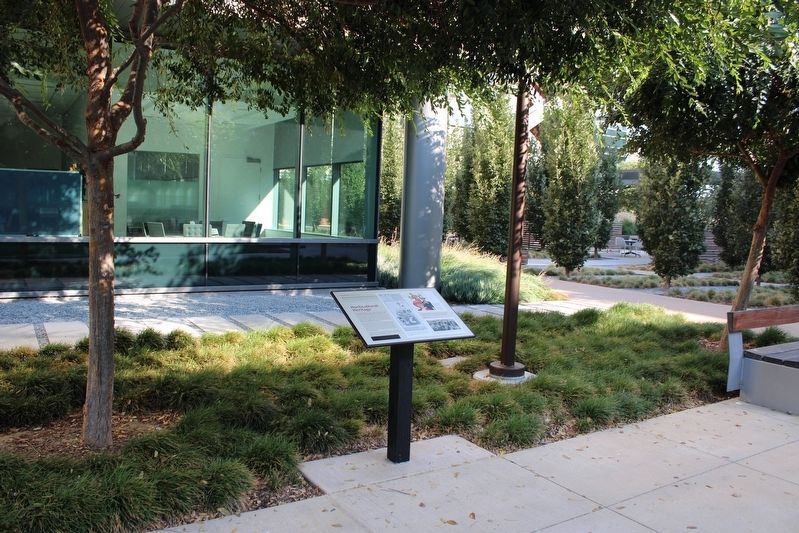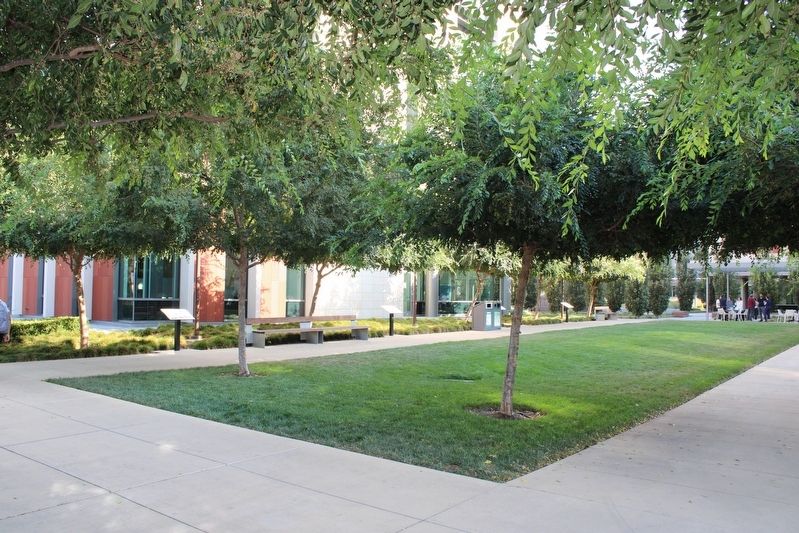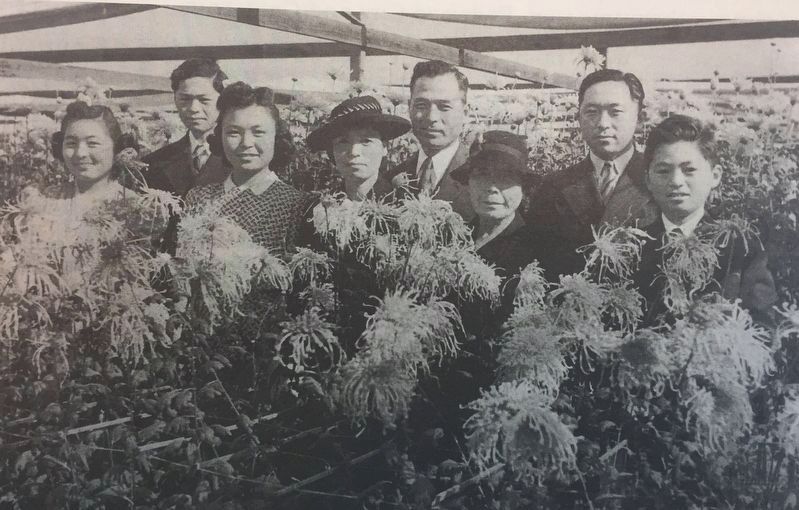Redwood City in San Mateo County, California — The American West (Pacific Coastal)
Horticultural Heritage
1898-1916
— Stanford | Redwood City —
Nurseryman Michael Lynch bought the property that is now the Stanford Redwood City campus in 1898. Lynch was best known for growing violets and sweet peas for sale as cut flowers and in seed packets. In 1901, he was hired by Jane Stanford to supervise gardeners at Stanford University’s campus and at her home. Lynch’s nurseries in Menlo Park and Redwood City supplied plants to the Stanford campus in this early period, including at least 10 palm trees.
Flower-growing boomed as a local industry in the early decades of the 20th century. Brothers Eikichi and Sadakusu Enomoto built a thriving chrysanthemum sales nearly equal in value California’s entire wheat crop. Redwood City boosters launched an annual Kiku Matsuri, or chrysanthemum festival, to promote the city and its climate.
Flowers were also grown by Japanese American and Chinese American tenants on Stanford lands, including Escondido Village and Stanford Research Park sites.
(There is a small panel in braille below the main text)
”[Chrysanthemum growing] took more work than the babies did; the babies grew up!”
Ruby Inouye, Redwood City Nurserywoman, 2003
Images:
(Left) The Peninsula’s climate and rail links allowed Michael Lynch and later growers to offer the latest varieties competitively with nurserymen on the East Coast and Europe.
(Top Right) Big Game spectators like these on 1953’s football program wore Turner (white) and Good News (yellow) chrysanthemums grown in Redwood City.
(Bottom Right) The Nakano Family, Japanese American chrysanthemum growers in Redwood City.
Erected by Stanford University.
Topics. This historical marker is listed in these topic lists: Asian Americans • Education • Horticulture & Forestry • Industry & Commerce. A significant historical year for this entry is 1898.
Location. 37° 29.093′ N, 122° 12.194′ W. Marker is in Redwood City, California, in San Mateo County. Marker can be reached from Broadway near Warrington Avenue. The resin marker, one of eight, is mounted to a metal stand in the courtyard west of Discovery Hall on the Stanford Redwood City campus. Touch for map. Marker is at or near this postal address: 455 Broadway, Redwood City CA 94063, United States of America. Touch for directions.
Other nearby markers. At least 8 other markers are within 2 miles of this marker, measured as the crow flies. Mezesville (a few steps from this marker); Airfield (a few steps from this marker); Alta California (a few steps from this marker); Ampex Years (a few steps from this marker); Native Americans (a few steps from this marker); Pleistocene Period (within shouting distance of this marker); Historic Connection (within shouting distance of this marker); Stage Station (approx. 1.2 miles away). Touch for a list and map of all markers in Redwood City.
Also see . . .
1. Redwood City Was the “Chrysanthemum Capital of the World”. Climate Online website article:
"The Enomoto brothers helped immigrants from Japan to start their own flower-growing businesses, enabling them to soon dominate the field. By 1926 Redwood City drew the moniker of the “chrysanthemum capital of the world” with local income of more than $7 million. The flower industry began to expand to other cities in the area and in 1931 the California Chrysanthemum Growers Association was founded."(Submitted on September 23, 2022, by Joseph Alvarado of Livermore, California.)
2. SRWC Campus Timeline.
"Learn about Stanford's growth in Redwood City."(Submitted on September 23, 2022, by Joseph Alvarado of Livermore, California.)
Credits. This page was last revised on November 18, 2022. It was originally submitted on September 23, 2022, by Joseph Alvarado of Livermore, California. This page has been viewed 146 times since then and 25 times this year. Photos: 1, 2, 3, 4. submitted on September 23, 2022, by Joseph Alvarado of Livermore, California.



